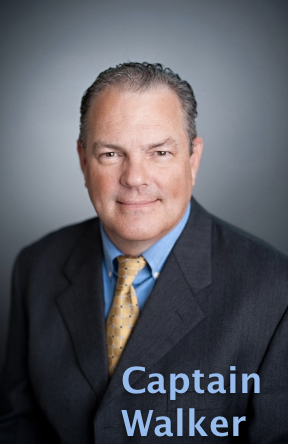ELA Resources
Please download the documents you need to use these materials in your class:
Text of Reading (Downloadables above)
This text was part of an interview conducted by American Society of Naval Engineers, Michelle Redmon and retired US Navy Captain, Johnny Walker. Michelle asked Captain Walker “What got you into Naval Engineering?” and his fascinating answer is the excerpt below.
He uses “dead in the water”, “cold iron”, to describe their ship when it was without power. He says “the casualty had cascaded” which is a special phrase for naval engineers. It means something in the ship broke and that broke other things and this continued until the entire ship was unusable.
CAPT Walker: I was Engineering Officer of the Watch and Main Propulsion Assistant in USS OLDENDORF (DD 972).
We’d lost all main propulsion and electrical power on a cruel stormy night in the South China Sea. We lost everything, including the Engineering Control & Surveillance System (ECSS), the brain of the entire engineering plant, and the system from where the casualty had cascaded. In sum, we couldn’t restart a generator or main engines without ECSS - we were quite literally, dead in the water.
Thinking back to that long night, now more than 30 years ago, the ship pitched and rolled brutally in a heavy sea; yet, without the constant machinery noise, it seemed eerily quiet. The entire crew was anxious (an understatement!), we’d been cold iron for a well more than hour before we figured out what went wrong and what to do. To start with we needed to re-load the ECSS software, a numerical control program with its code stored as punched holes on a one inch-wide, mile-long Mylar tape, mounted in a plastic cartridge like a huge VHS tape. We had 40 minutes of battery backup power to run all the control consoles including the optical tape reader (mounted on the side of the propulsion console). Once the ECSS cartage was inserted, it took 25 minutes to load the program with an automatic pass/ fail parity check at the end – we had one shot. The tape buzzed and whorled as it loaded, the eyes of 20+ watch standers and off watch engineering department sailors (who by then accumulated in main control), stared at this thing, nobody said a word. With a single pop-click noise, the tape stopped – for a few seconds the small indicator lights on the optical reader flickered as the system went through its parity check – the lights suddenly stopped – all red – the load failed. We only had 15 minutes of battery power left to do a 25-minute program load, all remained motionless. In an instant an idea came, I slowly walked over and started shutting down the other consoles, one by one – Damage Control Console, the Fuel Control Console… (while simultaneously regretting not ordering this done as the EOOW in the first place). Before I got to the Electrical Plant Control Console (EPCC), the watch team had shaken off its funk and started to move out on their own in shutting down the EPCC and alarm panels that fed off our precious backup power – at the time I wasn’t even sure this trick would work. However, in less than a minute we had enough battery power, enough time to do another ECSS re-load. Within a half hour, with the second ECSS parity check passed, we’d re-started the first generator… then another…soon the main engines were back online – and we were happily (and plenty relieved), to be again underway. Exhausted sailors who’d gotten up on their own in the middle of the night to help where they could, returned to their racks - things settled down to the normal watch routine. I thought to myself this ship’s engineering plant wasn’t just a sophisticated machine – it was alive, it had a personality – and a personality just like our family’s old champion mare, “Happy Samson.” (Most people don’t know a race horse has to be trained every day). As for Happy - If you were good to her, she was good to you – she was like riding a rocket – cranky, completely mean to the bone when treated with anything but the deftest gentility…she never suffered fools… but when the love was laid on, she never disappointed at the track. DD-972 / “Oly’s” plant was like Happy – she’d gotten doggone mean from our riding her hard and putting her away wet, we weren’t showing her the love. We’d unknowingly slowly cooked the insulation on some ECSS data cables that ran near #2 waste heat boiler, damage to the cables came from heat exposure caused by deteriorated lagging around the boiler – stray voltages from the cracked / cooked insulation sent bad ECSS data signals up and down to ECSS’s fragile transistor based processor and memory – shutting ECSS down hard. The boiler lagging seemed like a small problem, always a lower on the priority list. But Oly was mad – and she let us know it – believe me, we started showing her the respect she deserved; we counted on her to take us into harm’s way and back – she needed to count on us - she’d given us a second chance on that frightening night in the South China sea – I became the diligent race horse trainer again, but this time it was with ships - I was hooked on Naval Engineering.
Adapted from: http://www.navalengineers.org/Membership/Member-of-the-Month/2017/February
Created by ASNE through a grant by the Office of Naval Research. Licensed: CC BY-SA 4.0